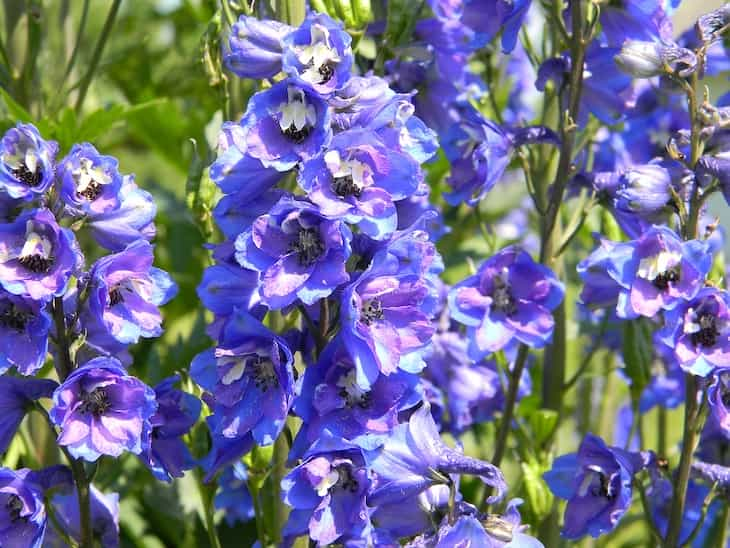If you want your garden to be full of beautiful and resilient flowers, then try growing delphinium – it's worth it!
Blue, purple, pink, and white flowers can attract butterflies to your garden and add a special romantic atmosphere to your place.
Here are a few tips on how to grow it.

Planting
Choose a sunny spot in your garden with well-draining soil.
Dig a hole that is slightly larger than the plant's root ball.
Place the delphinium in the hole and cover the roots with soil.
Make sure the crown (base of the plant) is level with the soil surface.
Watering
Water the delphiniums regularly, especially during dry periods.
Keep the soil evenly moist but not waterlogged. Avoid overwatering, as it can cause root rot.
Mulching
Apply a layer of organic mulch around the base of the plants.
This helps retain moisture, suppresses weed growth, and keeps the soil temperature stable.
Support
Delphiniums have tall flower spikes that may require support to prevent them from toppling over.
Use stakes or supports to keep the plants upright.
Place the supports in the ground early in the growing season to avoid damaging the roots later on.
Fertilizing
Feed delphiniums with a balanced, slow-release fertilizer in early spring.
This provides them with the necessary nutrients for healthy growth.
Avoid excessive fertilization, as it can lead to weak stems and fewer blooms.
Deadheading
Remove spent flowers by cutting the stalks back to the base of the plant.
Deadheading encourages the delphiniums to produce more blooms and extends the flowering period.
Pest and Disease Control
Monitor the plants for common pests like aphids or slugs.
If you notice any infestation, remove the pests by hand or use an appropriate insecticidal soap.
Keep an eye out for signs of diseases such as powdery mildew or crown rot.
Promptly address any issues to prevent further spread.
Previously, we talked about safe pesticides for fruit trees.












